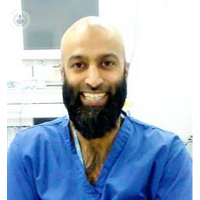Ask a top orthopaedic surgeon: what’s it like to work at the Olympics?
Written in association with:One of our leading orthopaedic surgeons Mr Ziali Sivardeen works very closely with many athletes, including those linked with Premier League football clubs. In 2012, Mr Sivardeen was the specialist on standby to operate on all shoulder and elbow injuries during the Olympics and Paralympics in London. Here, he shares a little of what he experienced during this time and explains whether treatment for sports injuries differs between amateur and professional athletes or not.

What was your role at the London Olympics and Paralympics?
I was the surgeon selected to operate on all shoulder and elbow injuries that required surgery during the Olympics and Paralympics in London 2012. I was also on call for any injuries and to give advice on the phone, or see the athletes in person. Most injuries did not require surgery.
It was a wonderful experience, however, wandering around the Athletes Village, and in the state-of-the-art clinic where athletes were assessed.
Which events turned out to be (surprisingly) the most dangerous?
I am sorry because I can’t remember although some of the injuries seemed to be in the sports that you would expect, such as football, show-jumping and weightlifting.
What were your aims given the extreme time pressure between events?
It was organised so that there were medics at all events therefore I was not involved in all of the events, but I was called in if surgery was suspected to be required.
Who were some of the most high-profile athletes you treated?
I don’t think I can say but they were from a variety of countries and a variety of sports.
What difference did having a specialist sports injuries clinic make to the athletes’ recovery?
I think my experience in this area helped optimise the care I provided. It helped me give holistic and multidisciplinary care, rather than a narrow surgical view. However, because the athletes were only there for a short time, any treatment would have had to continue in their own countries.
For patients that are in your longer-term care, what might a holistic treatment plan look like?
This involves a multidisciplinary approach with different specialists being involved in the care, addressing different aspects of a patient’s overall wellbeing. So this could involve a dietician, a psychiatrist, a podiatrist (to help with gait and footwear), physiotherapist, osteopath, and radiologist. To achieve maximum benefit and the best results its best to get a team approach to treatment.
Does treatment for sports injuries differ between amateur and professional athletes?
Overall the treatment can often be the same, for instance, someone with a dislocation of the shoulder will have similar treatment. The goals of a professional athlete and their resources, however, are different. They often need to get back to sports as quickly as possible, as such, the rehabilitation is often more intense and the recovery is often quicker.
More expensive rehabilitation modalities are available to the professional compared to the amateur, depending on what a club can pay for. Often there are more physio sessions and more medical staff who can help and give more of a multidisciplinary approach to care.
You can book an appointment with Mr Sivardeen here via his Top Doctor’s profile if you would like his expert opinion in your case.


